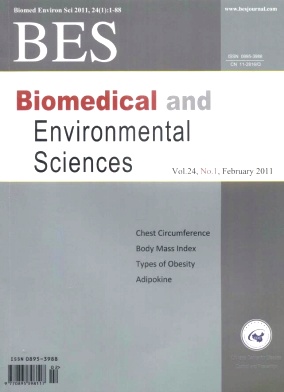Abnormal Adipokines Associated with Various Types of Obesity in Chinese Children and Adolescents
doi: 10.3967/0895-3988.2011.01.002
-
Key words:
- Adipokine /
- Types of obesity /
- Body mass index /
- Waist circumference /
- Child and adolescent /
- Chinese
Abstract: Objective To explore the role of adipokines including insulin, resistin, leptin, adiponectin, acylation stimulating protein (ASP) and complement C3 (C3) in various types of obesity (peripheral obesity,abdominal obesity and mixed obesity) in Chinese children and adolescents, and their relationships with body size and pubertal development.Methods Children and adolescents (n=3 508) aged 6 to 18 years, with 1 788 boys and 1 720 girls were assessed for body mass index, waist circumference, pubertal development, blood insulin, resistin, leptin,adiponectin, ASP and C3 levels. Three types of obesity [peripheral obesity (n=43), abdominal obesity (n=473), mixed obesity (n=1 187)] and non-obese control (n=1 805) were defined with combined use of Chinese body mass index and waist circumference criteria.Results Serum resistin, leptin and adiponectin levels were higher in girls than those in boys (all P<0.01). Insulin and leptin increased and adiponectin decreased across five Tanner stages in both girls and boys (all P<0.001), while ASP changed only in girls (P<0.001) and C3 only in boys (P<0.001). Insulin,leptin and ASP were higher, but adiponectin was lower in all three types of obesity vs. the non-obese control (all P<0.05). The greatest abnormalities of all six adipokines were found in the mixed obesity group. With inclusion of body mass index and waist circumference in simultaneous regression analyses,both body size indices were independently and significantly correlated with insulin, leptin and adiponectin after age and gender adjustment. Compared with waist circumference, the body mass index was stronger in interpreting insulin, leptin, adiponectin and ASP levels, whereas it was weaker in explaining variance of plasma C3.Conclusions Obese children have a worse metabolic profile with high insulin, resistin, leptin, ASP and C3, and low adiponectin levels. The adipokine profile in mixed obesity is worse than that in peripheral or abdominal obesity. Identification of obese subjects with a malignant adipokine profile using a combination of body mass index and waist circumference is important for the prevention of obesity-related disease.
| Citation: | ZHANG MeiXian, ZHAO XiaoYuan, LI Ming, CHENG Hong, HOU DongQing, WEN Yu, Katherine CIANFLONE, MI Jie. Abnormal Adipokines Associated with Various Types of Obesity in Chinese Children and Adolescents[J]. Biomedical and Environmental Sciences, 2011, 24(1): 12-21. doi: 10.3967/0895-3988.2011.01.002 |







 Quick Links
Quick Links
 DownLoad:
DownLoad: